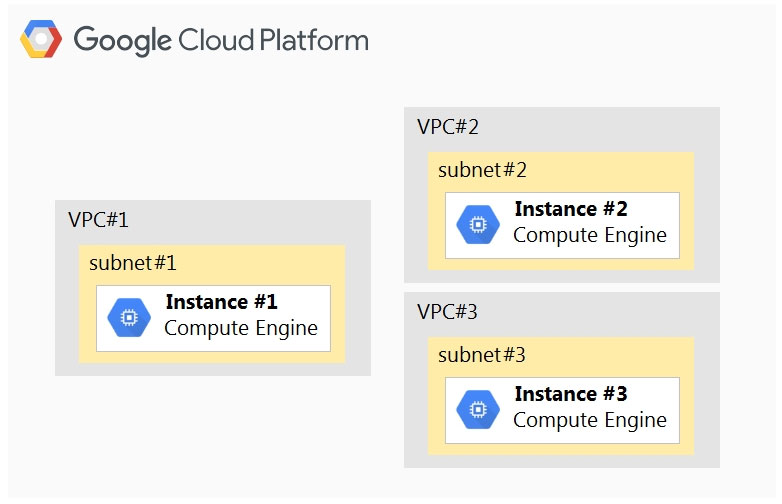You have developed a non-critical update to your application that is running in a managed instance group, and have created a new instance template with the update that you want to release. To prevent any possible impact to the application, you don't want to update any running instances. You want any new instances that are created by the managed instance group to contain the new update. What should you do?
C
Your company is designing its application landscape on Compute Engine. Whenever a zonal outage occurs, the application should be restored in another zone as quickly as possible with the latest application data. You need to design the solution to meet this requirement. What should you do?
D
Your company has just acquired another company, and you have been asked to integrate their existing Google Cloud environment into your company's data center. Upon investigation, you discover that some of the RFC 1918 IP ranges being used in the new company's Virtual Private Cloud (VPC) overlap with your data center IP space. What should you do to enable connectivity and make sure that there are no routing conflicts when connectivity is established?
A
You need to migrate Hadoop jobs for your company's Data Science team without modifying the underlying infrastructure. You want to minimize costs and infrastructure management effort. What should you do?
A
Reference:
https://cloud.google.com/architecture/hadoop/hadoop-gcp-migration-jobs
Your company has a project in Google Cloud with three Virtual Private Clouds (VPCs). There is a Compute Engine instance on each VPC. Network subnets do not overlap and must remain separated. The network configuration is shown below.
Instance #1 is an exception and must communicate directly with both Instance #2 and Instance #3 via internal IPs. How should you accomplish this?
B
You need to deploy an application on Google Cloud that must run on a Debian Linux environment. The application requires extensive configuration in order to operate correctly. You want to ensure that you can install Debian distribution updates with minimal manual intervention whenever they become available. What should you do?
B
Reference:
https://cloud.google.com/compute/docs/os-patch-management
You have an application that runs in Google Kubernetes Engine (GKE). Over the last 2 weeks, customers have reported that a specific part of the application returns errors very frequently. You currently have no logging or monitoring solution enabled on your GKE cluster. You want to diagnose the problem, but you have not been able to replicate the issue. You want to cause minimal disruption to the application. What should you do?
C
Reference:
https://cloud.google.com/blog/products/management-tools/using-logging-your-apps-running-kubernetes-engine
You need to deploy a stateful workload on Google Cloud. The workload can scale horizontally, but each instance needs to read and write to the same POSIX filesystem. At high load, the stateful workload needs to support up to 100 MB/s of writes. What should you do?
D
Reference:
https://cloud.google.com/storage/docs/gcs-fuse
Your company has an application deployed on Anthos clusters (formerly Anthos GKE) that is running multiple microservices. The cluster has both Anthos Service
Mesh and Anthos Config Management configured. End users inform you that the application is responding very slowly. You want to identify the microservice that is causing the delay. What should you do?
A
You are working at a financial institution that stores mortgage loan approval documents on Cloud Storage. Any change to these approval documents must be uploaded as a separate approval file, so you want to ensure that these documents cannot be deleted or overwritten for the next 5 years. What should you do?
A
Reference:
https://cloud.google.com/storage/docs/using-bucket-lock